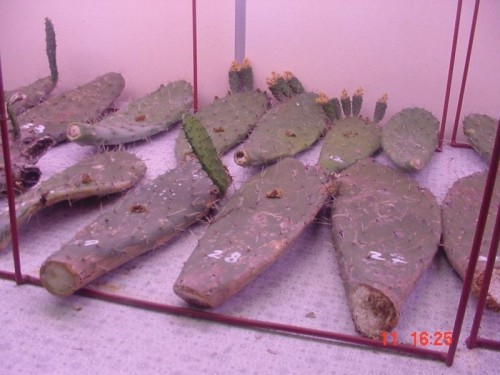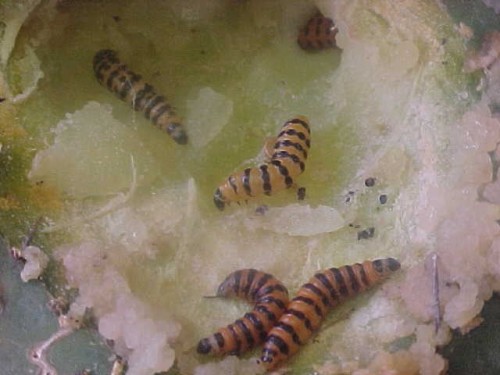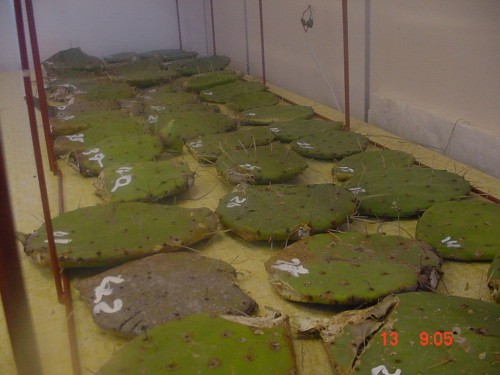2020, Vol. 1, Issue 1, Part A
The effect of colony size on the establishment of feeding activity of Cactoblastis cactorum larvae on cactus plants
Author(s): Buyiswa Mahala
Abstract: The study was conducted in the laboratory to observe the effect of the colony on the establishment of feeding activity and development responses of Cactoblastis cactorum (Berg) (Lepidoptera: Phycitidae) on two cactus species namely and Opuntia lindheimeri. The main objective was to establish the minimum number of C. cactorum larvae needed to facilitate a successful attack on a cactus cladode. We also examined the effect of cladode age on the larva establishment. In order to get this information replicates of cactus cladodes collected from different levels of cactus plants were infested with 5, 10, 15, 20, and 25 egg batches. All the different levels of egg batches placed on the cladodes hatched well. It was observed that the neonate larvae initially kept together while attempting to enter the cladode. Successful entrance into O. ficus indica cladode was observed on those cladode infested 15 were 20 and 25 eggs were placed. Those larvae fed, developed and eventually pupated and the adults emerged normally. On the other hand, larvae which hatched on O. lindheimeri larvae were unable to establish on this cactus species. When the neonate larvae attempted to penetrate into the cladode they drowned in the exudates produced at the point of entrance. As a result all larvae on O. lindheimeri did not complete their developmental cycle.
Related Graphics: Click here for more related graphics

Fig. 1: Cladodes of O.ficus indica with frass mounds are containing actively feeding larvae of C. cactorum

Fig. 2: Well-developed larvae of C. cactorum dissected out of the cladodes that were successfully attacked

Fig. 3: Cladodes of O.lindheimeri infested at the same time as the O. ficus indica shown in Figure 2 but showing no signs of C. cactorum larvae feeding activity.
DOI: 10.33545/27080013.2020.v1.i1a.3
Pages: 08-12 | Views: 1548 | Downloads: 705
Download Full Article: Click Here

How to cite this article:
Buyiswa Mahala. The effect of colony size on the establishment of feeding activity of Cactoblastis cactorum larvae on cactus plants. Acta Entomol Zool 2020;1(1):08-12. DOI: 10.33545/27080013.2020.v1.i1a.3




